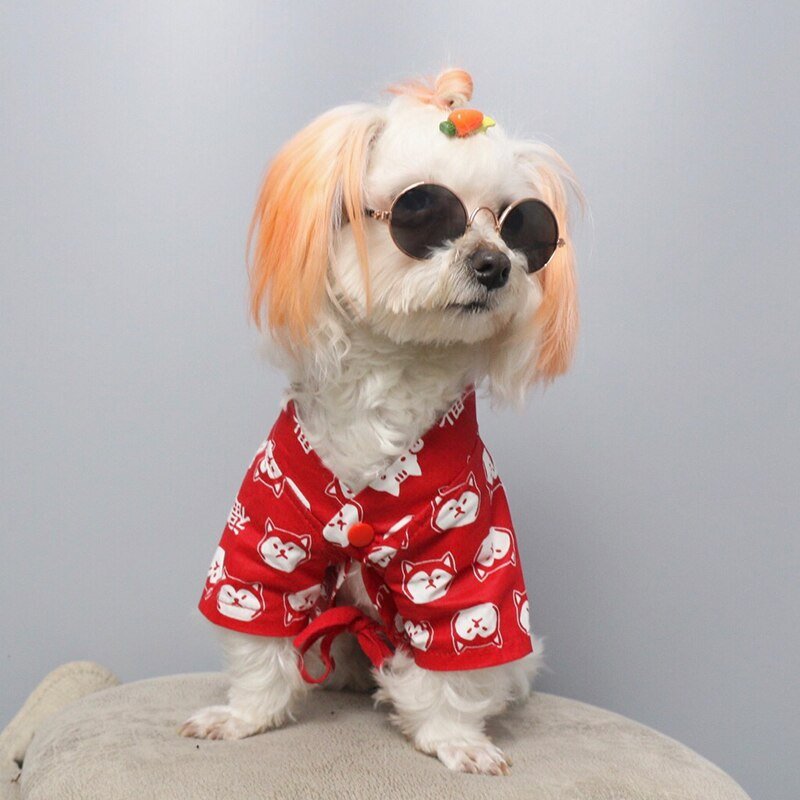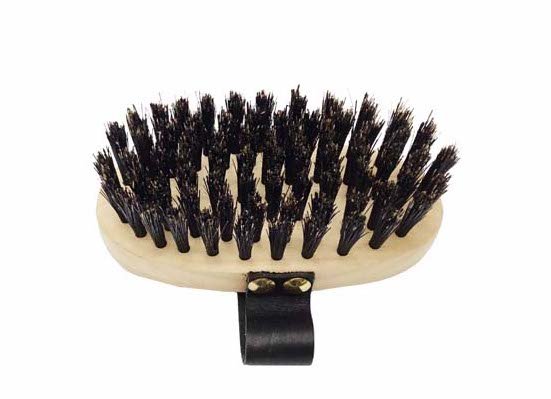Japanese Dogs & Uno Hake Brushes
There are many types of domestic Japanese dogs however you rarely see them in cities because most of them are bred to be outdoor dogs.
It is only in the last 15 years or so that we have seen so many Japanese people having dogs! In 2003 there was a “boom” which is a Japanese phrase meaning that something has become very popular. Many apartments still ban dogs because of the noise. Japanese that buy dogs now tend to be tiny and mostly western breeds. This is mostly because Japanese apartments are quite small. But it has become a huge industry with clothes, accessories, crazy unimaginable accessories and dog strollers. For some reason, many people prefer to keep their dogs in a dog stroller when take them out.
Dog owner etiquette is very important. Of course you would never see dog poo on the street. Most people actually carry special dogs wipes to wipe their behind after they have done their business. If your dog pee’s you always have a bottle of water to wash it away. There is no law or regulation, just Japanese manners.
Some of the most popular Japanese dogs:
Akita Inu:
Probably the most famous around the world for being the breed that Japan’s most famous dog “Hachiko” was. This is the dog that came to Shibuya station every day, years after his master had died. His ashes were put with his masters at their family plot in Aoyama Cemetery. A symbol of loyalty and friendship between dog and owner. Personality: Akita Inus are dominant dogs and are known to do poorly with other dogs of the same sex. They are, however, very good with people and children.
Shiba Inu:
A small, alert, and agile dog that copes very well with mountainous terrain and hiking trails. The Shiba Inu was originally bred for hunting. It looks similar to and is often mistaken for other Japanese dog breeds such as the Akita Inu or Hokkaido Inu, but the Shiba Inu is a different breed with a distinct blood line, temperament, and smaller size than other Japanese dog breeds. Shiba Inu are independent, territorial, and proud. They need to be socialised early.
The Hokkaido Inu:
Believed to have an older bloodline compared to the other Japanese dog breeds. From Japan's northernmost island, the Hokkaido Inu has a thicker outer coat, larger paws, and smaller ears to help them cope with the frigid cold. Intelligent, strong, and devoted, the Hokkaido Inu had been bred to be hunting dogs, capable of managing wild boars and even small bears. As a result, they continue to be very strong-willed breed and may show aggression toward other dogs. They tend to develop a very strong bond with their owners and require a fair amount of attention. They are strong, devoted, intelligent.
But for the most part, Japanese dogs are hunting dogs and not so happy in the city unless you buy them when they are puppies and train them. Still they are hunters by nature and don’t always get along with the other dogs in the dog park. They do have an elegance and pride about them and always stand out when you see one in the city as they look distinctly Japanese.
Uno Hake Dog Brushes
The bristles made from wild boar hair. The wood is magnolia.
“Hake” are brushes formed by separate pieces of wood. After drilling small holes in one piece of wood, they attach the strands of hair by hand because it is the only way that they can ensure they are tight enough. After this they bond the wood with the main piece. After this the hairs are cut to symmetry.
Uno Hake brushes started in 1917. Currently Ms. Chieko Uno works with her daughter Michiyo to continue their family craft. These brushes have been modernised to have an array of modern uses. For home use, to clean your face, body, clothes, shoes, etc.
To achieve this the type of animal hair need to be chosen and prepared for each product. Each type of hair has a different texture needs to be treated with oil.
Size: about W7.5 x L14 x H5.5 cm
Please visit Bows & Arrows or see it online HERE








